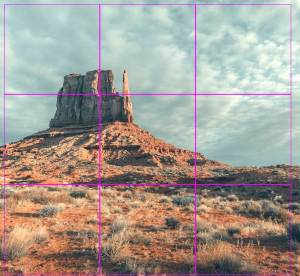The Drawing Process in Art helps the beginning artist navigate the maze of questions about how to start a drawing with a 6 step plan for drawing success.
An amazing drawing begins before picking up the pencil. Ask and answer these questions before starting to draw: What makes a good subject, what are the best tools for drawing, how should I compose my drawing, and what colors should I use? The Drawing Process in Art addresses these critical questions, and presents tips on subject, composition, media, and color. And remember to visit the Beginner’s Art Blog for more information on the practical aspects of drawing.
Before you pick up the pencil, start your drawing with a plan.

Photo by Valentin Salja on Unsplash
How to Start a Drawing in 6 Steps:
- Choose the right subject
- Carefully plan the composition
- Select the best drawing media for the subject
- Pick a group of colors for a pleasing color scheme
- Decide on the type of paper to draw on
- Draw a grayscale value study.



1. Choose the subject
What’s the best subject for a beginning artist?
This question isn’t so easy to answer. Excitement about drawing a particular subject doesn’t guarantee a successful drawing. A beginning artist must consider skill level, genre, and available lighting when selecting the best subject to draw.
What to Draw as a Beginning Artist? helps avoid the pitfalls that result from choosing a landscape, still life, or portrait without proper planning.
2. Plan the composition
What makes a good drawing composition?
There’s more to just learning the rules of composition in art. Careful planning ensures that all elements of composition fit on the paper before starting the drawing. An aesthetically pleasing composition also accounts for paper area taken away by matting and framing.
How to Plan a Composition in Drawing describes a strategy for composition and how to avoid common composition mistakes.
3. Pick the drawing media
What drawing tool should I use for the subject?
Just grabbing one’s favorite pencil or pastel crayon may not be wise. A beginning artist must give careful thought to subject, composition, and type of paper before choosing a drawing tool.
How to Choose the Right Drawing Media discusses the characteristics of graphite pencils, charcoal, colored pencils, oil pastels, hard and soft pastels, and which media is best for a particular subject and paper type.



4. Choose a color scheme
How to pick harmonious colors for a drawing
Selecting a harmonious combination of colors shouldn’t be left to chance. A carefully planned color palette gives an artwork its mood and creates the feeling of unity throughout the piece. Knowing what a color wheel is and how to use it is critical to creating a drawing with a pleasing color scheme.
How to Choose a Color Scheme for Drawing discusses how to select a group of colors using the color wheel, and also looks at the effect of color on toned paper.
5. Select the paper
Pick the right drawing paper for the subject
Beginning artists are sometimes frustrated after working many hours on a drawing, only to discover that the subject would look better if drawn on a different type or size of paper. Sometimes, a paper type is not compatible with a particular drawing tool.
What Kind of Drawing Paper Should I Use? discusses paper size, weight, texture, tone, and which type of paper is best for landscape, still life, or portrait drawing.
6. Draw a value study
What’s a value study and why is it important?
Understanding grayscale value is very important to create three dimensional depth in a drawing. It’s critical to see the subject as a range of values and to establish these values before starting the final drawing.
Drawing a Value Study discusses grayscale value charts, and how they’re used as a preparation to the final drawing. Also addressed is the concept of color value which may also confuse a beginning artist.
Beginner’s Art Blog – Latest Posts
Tips and tricks on the art of drawing, history of the drawings of Great Masters, and other articles pertaining to practical aspects of drawing.
Rhonda Roth Art Now for Sale on Saatchi with Free Shipping
My original art is for sale on Saatchi Art! Watercolor, oil pastel, and pencil artwork ships already…
Art for Charity
Charitable organizations may obtain framed original works of art free of charge for display at their…
Abstract Art and Abstract Realism – is it Real Art?
Some people love abstract art, others hate it. Setting aside personal preference, all art needs to s…
Women Chinese Painters from the Qing Dynasty
The post, Analysis of Early Chinese Painting from the Qing Dynasty, discusses notable artists who ma…
Analysis of Early Chinese Painting from the Qing Dynasty
The beautiful style of early Chinese painting is truly amazing. The brushwork and line of these pain…
Avoid Copyright Infringement – 4 Best Artist Practices
As an artist, sometimes I’m bursting with creativity. However, when inspiration runs dry, finding a …

Art Therapy Resources
Drawing and painting are well known for its calming effect on the mind for both creators and viewers of art. Vincent Van Gogh, who suffered from severe mental illness, found drawing and painting lessened his depression. For those artists interested in art therapy, either for themselves or for clients, here are some resources:
- Art Therapy activities: 8 Art Therapy Activities for Coping with Grief
- The effect of art on the brain: Art Therapy As a Means of Coping with Child Loss and Grief
- American Art Therapy Association
Buy my original art on Saatchi Art
See the complete gallery including recent work on Instagram and on my portfolio website.







